Guardians of the year: Porche Bennet-Bey, Assa Traoré and Racial-Justice Organizers
Guardians put themselves on the line to defend the ideals sacred to democracy. In 2020, they fought on many fronts. When George Floyd was killed in Minneapolis in May, it was proof—if anyone needed it—that Black lives are still not treated as equal in America. In the aftermath of his death, a wave of outrage surged and was harnessed by organizers, both veteran and newly energized, to bring millions to the streets and spotlight the inequities in a world that claims to be far better than it is. The movement for racial justice found its voice in multitudes: a mother in Kenosha delivering her frank report to Joe Biden; a sister in Paris calling for police accountability in her brother’s death. In this extraordinary year, they guarded truth—lived truth.
Porche Bennett-Bey had a simple message for then candidate Joe Biden in September when she approached the microphone at Grace Lutheran Church in Kenosha, Wis.: he needed to better understand the Black experience in her hometown. “A lot of people won’t tell the truth,” she said without flinching. “But I’m telling the truth.”
Kenosha had been in the headlines for days after Jacob Blake, a Black man, was shot in the back seven times by police and left partially paralyzed. Protests engulfed the city, pushing local officials to impose a curfew. Later, a white teenager gunned down protesters, killing two, and President Donald Trump visited to court votes behind a slogan of “law and order.”
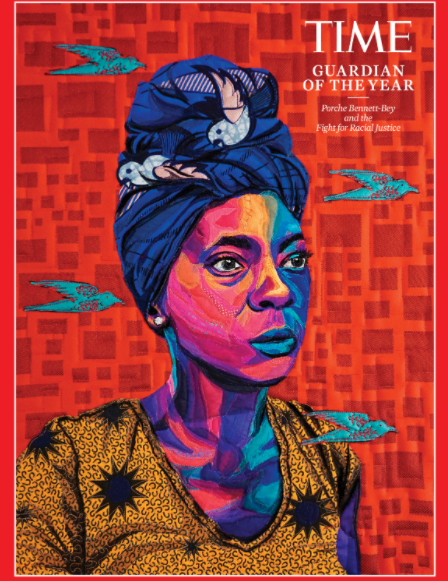 Portrait by Bisa Butler for TIME
Portrait by Bisa Butler for TIME
Bennett-Bey, a local organizer, expressed frustration that the officers who shot Blake remained free, immune to laws that would surely have condemned anyone without a badge, but she also explained that these events didn’t happen in a vacuum. She told Biden how gentrification had limited affordable housing stock and how police target the city’s minority population. She described feeling that she was turned away from work because of the color of her skin. She spoke urgently of the challenge of raising children amid the COVID-19 health crisis. “I just felt I might as well tell him about what was really going on,” she tells TIME at a late-November rally she planned. “Let him see my life.”
For decades, the words of those telling the truth have been left largely unheeded. Because the victor writes history, the history of the West has been written to minimize the realities experienced by people of color, even to those who experience them firsthand. Marginalized groups have been lied to, told they were intellectually inferior, or should be able to succeed if only they worked harder or pulled up their pants. That means the simple act of telling the truth requires courage—and can feel self-defeating. “Even if I should speak, no one would believe me,” James Baldwin wrote in 1962. “And they would not believe me precisely because they would know that what I said was true.”
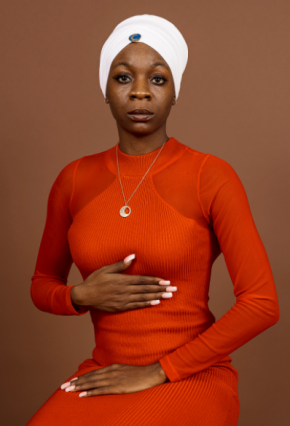 Porche Bennett-Bey, an Army veteran and mother of three from Kenosha, Wis., quit her job as an in-home care assistant this summer to devote her time to racial-justice work. 'This has changed my life,' she says.Adrian Octavius Walker for TIMEBut in the summer of 2020, the truth became unavoidable. For the better part of 10 minutes, a white police officer in Minneapolis knelt on George Floyd’s neck even though he was clearly subdued and pleading with a refrain of “I can’t breathe.” The footage shook the world to its core. The callousness and indeed the racism were impossible to deny.
Porche Bennett-Bey, an Army veteran and mother of three from Kenosha, Wis., quit her job as an in-home care assistant this summer to devote her time to racial-justice work. 'This has changed my life,' she says.Adrian Octavius Walker for TIMEBut in the summer of 2020, the truth became unavoidable. For the better part of 10 minutes, a white police officer in Minneapolis knelt on George Floyd’s neck even though he was clearly subdued and pleading with a refrain of “I can’t breathe.” The footage shook the world to its core. The callousness and indeed the racism were impossible to deny.
Suddenly, the voices of those who had long been sidelined broke through, demanding that the world pay attention and stop making excuses. But it wasn’t out of thin air. It was because activists like Bennett-Bey forced their fellow Americans to connect the dots and understand just how much—from police brutality to racial disparities in COVID-19 cases—is tied to systemic racism. Night after night, organizers put their bodies on the line, gathering people of all races at a time when close quarters posed a threat, on top of the risk of injury at the hands of law enforcement. They chanted Floyd’s name alongside those of other Black Americans killed in recent months—Ahmaud Arbery, Breonna Taylor, Tony McDade, Elijah McClain. By some estimates, as much as 10% of the U.S. population took to the streets over the summer to call for an end to institutional racism and injustice, in what may have been the largest mass protest in American history.
“We have some of the whitest, wealthiest towns here in our district organizing Black Lives Matter rallies, vigils and marches,” says Jamaal Bowman, a Black Representative-elect from New York. “Young white kids are forcing their parents to be a part of the movement and to be part of the conversation.”
Marches erupted in more than 50 countries, in cities from Nairobi to Seoul to Rio de Janeiro, expanding beyond solidarity to highlight similar issues in their own nations. Black French activists exposed the country’s persistent police brutality and organized huge marches. Aboriginal Australians showed how attempts to eradicate their ancestors still shape their daily lives. The storytelling and the organizing of activists around the world drove a recognition that at least in polite company, yes, Black lives matter. Immigrant lives matter. Aboriginal lives matter.
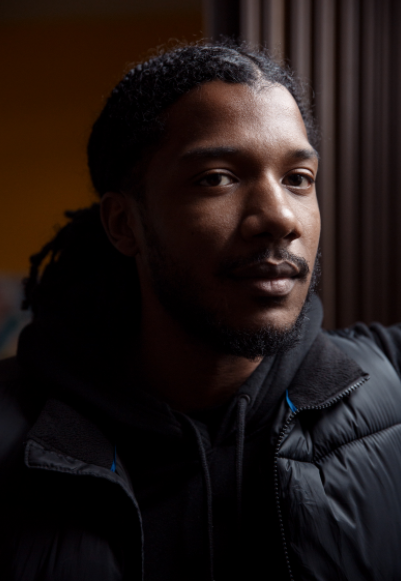 Damon Williams is the co-director of the #LetUsBreathe Collective, a Chicago-based alliance of artists and activists. 'I’m optimistic about changing the spirit and the will of the people,' he says.Thomas Gavin
Damon Williams is the co-director of the #LetUsBreathe Collective, a Chicago-based alliance of artists and activists. 'I’m optimistic about changing the spirit and the will of the people,' he says.Thomas Gavin
Next year will usher in a new era: post-Trump, eventually postpandemic and post–racial awakening. Whether this moment will be channeled into concrete societal change or lost to the wind remains to be determined. “Is it going to happen overnight? No,” says Bennett-Bey. “But am I willing to put in the work to see that change? Yes.”
Children around the world wind their way through the school system hearing triumphant narratives about their country that are built on half-truths. Students in the U.S. learn that despite their nation’s history of allowing humans to be bought and sold, a handful of great heroes bent the so-called arc of history toward justice and excised racism. In England, the national curriculum stipulates that schoolchildren should learn “how Britain has influenced and been influenced by the wider world,” but that rarely means exploring how Britain gained complete or partial control of nearly a quarter of the globe at its peak or learning about the country’s role in spreading slavery. In France, symbols, monuments and literature lionize the nation’s motto of liberté, égalité and fraternité, but episodes of discrimination—including grievances from minority communities in the poorer banlieues of Paris and other cities—reveal the principles as more aspiration than reality. “Behind the words democracy, equality, fraternity, liberty, when we draw back the curtains, horrible things are happening,” says Assa Traoré, an activist in Paris whose brother died in police custody in 2016.
For those on the receiving end of systemic oppression, the disconnect is clear in days, months and years of lived experience, from the mundane inability to get a cab to persistent police harassment—or worse. And it can feel like you’re yelling into a void. Most people of color will have been told, “It has nothing to do with race,” by even the most well-intentioned people in response to an instance of apparent racism. To succeed, many of them have learned to soften how they talk about racism. “If I spoke the language of James Baldwin as he speaks it, on the campaign stump, I’m probably not gonna get a lot of votes in Iowa,” former President Barack Obama said in a December interview with PEN America. “James Baldwin didn’t have to go out and get votes.”
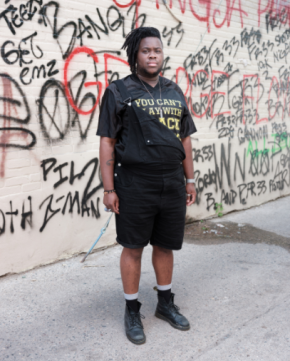 Oluchi Omeoga, a Black trans organizer from Minneapolis, co-founded Black Visions Collective in 2017. 'It’s always those who are most at the margins who are leading the work,' they say. 'We’re trying to build a world that does not exist yet.' Rahim Fortune for TIMEIn 2020, many Black Americans and members of other marginalized groups decided the time had come to stop selecting their words so carefully. Floyd was killed in late May when the world was unusually tense, in the thick of mass unemployment and a global pandemic that disproportionately affected people of color. Almost immediately, activists sprang from their lockdowns to say, “Enough is enough.” Their work included the typical organizing of rallies, but the swell of public protests did something else too: it emboldened more people of color to speak truths they had understood for years but kept buried out of concern for repercussions. Suddenly, these stories gained traction unthinkable just a few weeks before.
Oluchi Omeoga, a Black trans organizer from Minneapolis, co-founded Black Visions Collective in 2017. 'It’s always those who are most at the margins who are leading the work,' they say. 'We’re trying to build a world that does not exist yet.' Rahim Fortune for TIMEIn 2020, many Black Americans and members of other marginalized groups decided the time had come to stop selecting their words so carefully. Floyd was killed in late May when the world was unusually tense, in the thick of mass unemployment and a global pandemic that disproportionately affected people of color. Almost immediately, activists sprang from their lockdowns to say, “Enough is enough.” Their work included the typical organizing of rallies, but the swell of public protests did something else too: it emboldened more people of color to speak truths they had understood for years but kept buried out of concern for repercussions. Suddenly, these stories gained traction unthinkable just a few weeks before.
Office workers demanded their employers fess up to their own legacies of racial bias in the workplace. Everyday people demanded that friends and family come to grips with this history—and threatened to end relationships if they didn’t. “The Movement for Black Lives did a really good job,” says Oluchi Omeoga, co-founder of the Minnesota-based activist group Black Visions Collective. “They made it uncomfortable to be racist in this moment.”
Grassroots activists on almost every continent seized the moment. In Hamilton, New Zealand, a Maori tribal confederation said they would tear down a statue of John Fane Charles Hamilton—the British naval commander after whom the city is named—prompting the city council to remove it. In Bristol, England, protesters toppled a 125-year-old statue of a slave trader and threw it in the city’s harbor. In Belgium, statues of King Leopold II—who oversaw the deaths of millions of Congolese—were defaced and removed from public view.
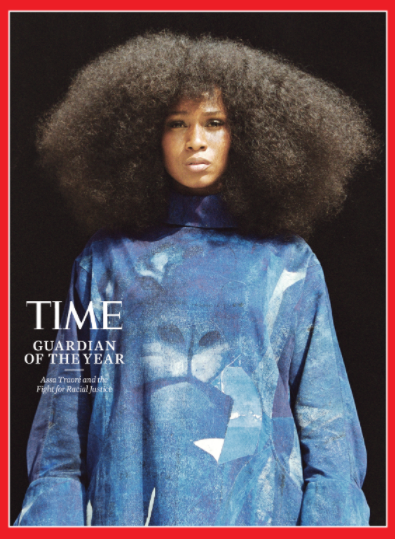 Photograph by Kenny Germé—Total Management
Photograph by Kenny Germé—Total Management
To Traoré, the activist in Paris, Floyd’s death felt like a chilling repeat of history. In 2016, her brother Adama had died in police custody on his 24th birthday. A secret deposition by police reportedly included his dying words: “I can’t breathe.” Yet despite a yearslong campaign for legal redress waged through her organization, the Truth for Adama committee, Traoré made little headway. As the video of Floyd went viral, the group issued a call on social media for a protest against police violence. Tens of thousands of people poured into the streets of Paris and other French cities carrying banners honoring George Floyd and Adama Traoré side by side. “Wow, we succeeded,” she recalls thinking, as she looked out at the sea of faces. “We sent the message that we have been talking about for four years.”
Her story has echoes on the other side of the world. In 2016, Wayne Fella Morrison, a 29-year-old Indigenous Australian, was found blue and unresponsive after correctional officers placed him facedown in the back of a prison van, bound and with a spit hood over his head. His sibling Latoya Aroha Rule, who uses the pronouns they and them, has since organized rallies to draw attention to Aboriginal deaths in custody. Four years ago, hundreds marched in solidarity in Adelaide, Melbourne and Sydney. Following Floyd’s death, tens of thousands took to the streets across Australia holding Black Lives Matter signs alongside the names of Indigenous people who have died in custody. Rule was stunned. Floyd’s death, they say, has allowed people “to see that this isn’t the past, this is systemic and it’s happening every day.”
As with any movement, this one led to its share of backlash. In the U.S., many right-wing news outlets questioned protesters’ motives and branded them violent “rioters,” even as an independent study showed that 93% of this summer’s racial protests were peaceful. For her part, Bennett-Bey received death threats, forcing her to think carefully about her every move and how to protect her children. And even as Trump promoted views that denigrated Black Americans and people of color more broadly, nearly 47% of American voters chose Trump. “Change is happening, change is coming, and that motivates us to keep going,” says Damon Williams, an organizer in Chicago and founding member of the #LetUsBreathe Collective. “But that motivation is always being met with a counterinsurgency of obstacles.”
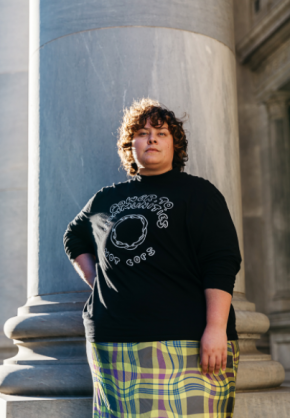 Latoya Aroha Rule, who is Aboriginal and Maori, traveled from Australia to the U.S. in 2019 to work with Black Lives Matter activists. 'It took the last four years to get wider Adelaide and wider Australia to stand up for Black Lives Matter to this degree,' they say. Sia Duff for TIME
Latoya Aroha Rule, who is Aboriginal and Maori, traveled from Australia to the U.S. in 2019 to work with Black Lives Matter activists. 'It took the last four years to get wider Adelaide and wider Australia to stand up for Black Lives Matter to this degree,' they say. Sia Duff for TIME
Trump also tried to turn U.S. history into a campaign issue, railing against “critical race theorists on college campuses,” referring to the theoretical framework academics have used to understand how racism is ingrained in society. He condemned activists who believe “that the United States is not an exceptional country but an evil one.”
But that’s not what the activists are actually saying. To acknowledge the origins of our present circumstances isn’t to condemn the U.S., France or any other country. The idea is that a more complete version of history allows us to build a better society. “If you want people to stand and put their hand on their heart and pledge allegiance to a flag,” says Bennett-Bey, an Army veteran, “that allegiance that they’re pledging should be made for them as well.”
A more widespread awareness of the problems plaguing our societies, while critical, is not enough. After a news site published a video of police beating a Black man in Paris in November, French President Emmanuel Macron wrote on Facebook that the images “shame us” and that his government would come up with proposals to fight discrimination. But even as he decried racism, his government was working to implement a controversial bill to ban publication of images of police officers online. (Lawmakers from his party later abandoned the measure amid a public outcry.) Biden suggested on the campaign trail that police could shoot suspects in the leg rather than the chest, a comment that likely has no attached policy proposal but is indicative of the uphill battle that activists face. “I’m nervous that folks have been socialized under this system for so long that they’re unable to think that another system is possible,” says Omeoga. “How we lose is that people don’t think that we can actually do better.”
But longtime activists know that progress is slow. “This is a marathon, and you’re running your lap of the race,” says Barbara Lee, a Democratic member of Congress from California who has called for a progressive agenda to combat systemic racism. “I’m going to continue to run this lap of the race in the Congress and do what I can do to move our agenda forward because we still haven’t addressed the core issues of racial injustice, systemic racism, gender inequality; we haven’t addressed human rights, LGBTQI equality.”
The work in national capitals represents just a small piece of the puzzle. While Bennett-Bey worked to get voters to the polls for the presidential election, her focus has shifted back to what she can do in Kenosha. She takes pride in her efforts to push the city council to fund body cameras for the city’s police and her engagement with local officials. Across the country, other activists work toward similar incremental progress, understanding that after the awakening they helped inspire, whatever changes come out of Washington, Paris or Canberra will be driven by what happens on the ground. —With reporting by Anna Purna Kambhampaty/Honolulu; Mariah Espada/Washington; Amy Gunia/Hong Kong; Karl Vick/Minneapolis; and Vivienne Walt/Paris
This article is part of TIME’s 2020 Person of the Year issue.
Article originally published by TIME on december 2020.